BACK
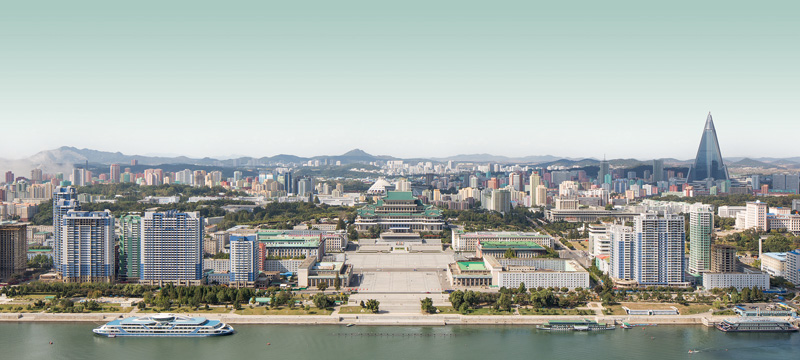
"Model City Pyongyang": An Interview with Cristiano Bianchi
by Jean Castorini / 20/12/2019 What first attracted you to visit Pyongyang in 2015 and what was your relation to photography back then?C.B: We wanted to experience a different reality, and this city definitely delivered. I have always been using photography as my own research method to understand reality... Architectural photography came out later as a natural superposition of my two passions, and it became my main collateral activity, beside my work as Architect, founder of Studio ZAG.
You carried out four visits since 2015 to the DPKR. What are your impressions on the evolution of Pyongyang’s architecture since your first discovery of the capital?C.B: Pyongyang is experiencing quite a big and fast development in constructions, especially considering the isolation of the country. During our first trip in 2015 Mirae Street was still under construction with only bare concrete visible, and in 2016 was finished. Ryumyong Street was later built in only one year, inaugurated on 2017. These new developments, with their saturated colors and futuristic shapes, represent the biggest change, together with the renovation of the oldest public buildings, where the beautiful original interiors are almost completely replaced, and lost.
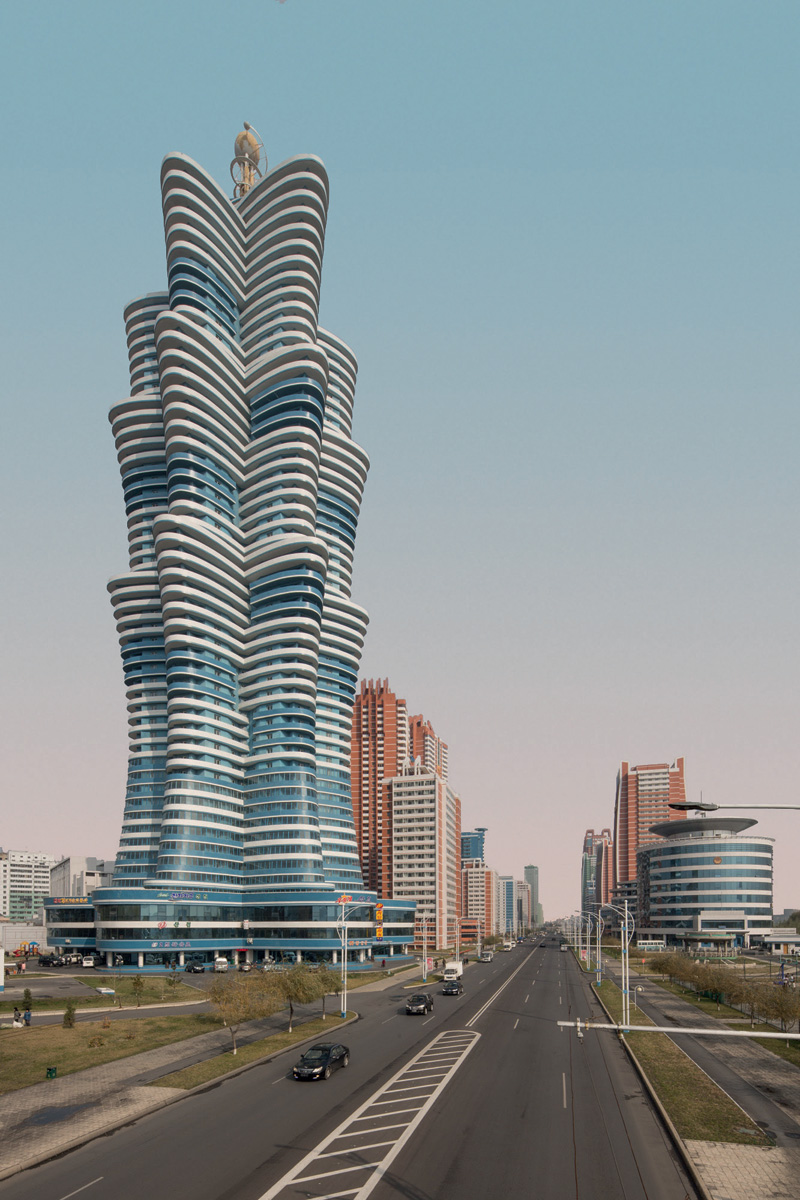 Photographic projects in North Korea is surging: Magnum photographer Carl De Keyzer published in 2017 his photographic book titled ‘DPKR’, more recently the Guardian’s architectural critic, Oliver Wainwright, published with Taschen ‘Inside North Korea’. Being an architect, how different do you think your vision of Pyongyang is?
Photographic projects in North Korea is surging: Magnum photographer Carl De Keyzer published in 2017 his photographic book titled ‘DPKR’, more recently the Guardian’s architectural critic, Oliver Wainwright, published with Taschen ‘Inside North Korea’. Being an architect, how different do you think your vision of Pyongyang is?
C.B: The projects you mention are of a photographic and critic nature. Our work follows a double approach: purely architectural for what concern the analysis of the city, and artistic for what concern the photography.
In your book, diagrams and architectural complement your photographs. Based on your researches, does Pyongyang’s urban planning model share any precedents with other world cities urban master plans?
C.B: We think of Pyongyang as a model city because it was built following a precise ideology as a model for a new society, and in this sense, it is similar to other Model Cities, from Renaissance (Pienza, Urbino) to Modernist examples (Brasilia, Chandigar). But it is unique because it was built from scratch after the destruction of the Korean War, and later developed in continuity following the same ideology for 70 years. That's why the ideological content of the city is perfectly readable, and the city can be described as an "open air museum of socialist architecture".
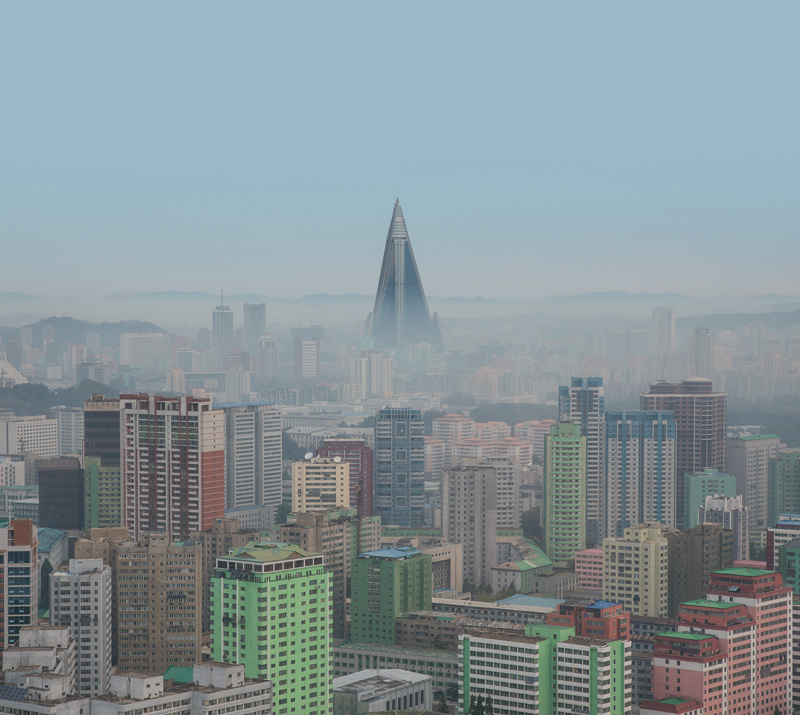 Your photographs testify of strict urban planning and extravagant architectural productions. How can those architectural spaces be appropriated by its citizens in Pyongyang?
Your photographs testify of strict urban planning and extravagant architectural productions. How can those architectural spaces be appropriated by its citizens in Pyongyang?
C.B: Pyongyang displays an incredible abundance of public buildings, public spaces and parks available to the citizens. On the other side, their use is regulated by different times and rituals, where the formal, semi-formal and un-formal use of the public space takes place.
Cities can be perceived as theatres, similarly to décors in which individual actions are performed. How much does Pyongyang seem to you to be a livable city rather than a mere utopian fantasy?C.B: Pyongyang is both a stage and a real city, where the two aspects continuously merge. That' s the feeling of a "fictional reality" that we experienced during our first trip, and that we tried to transmit through the photography.
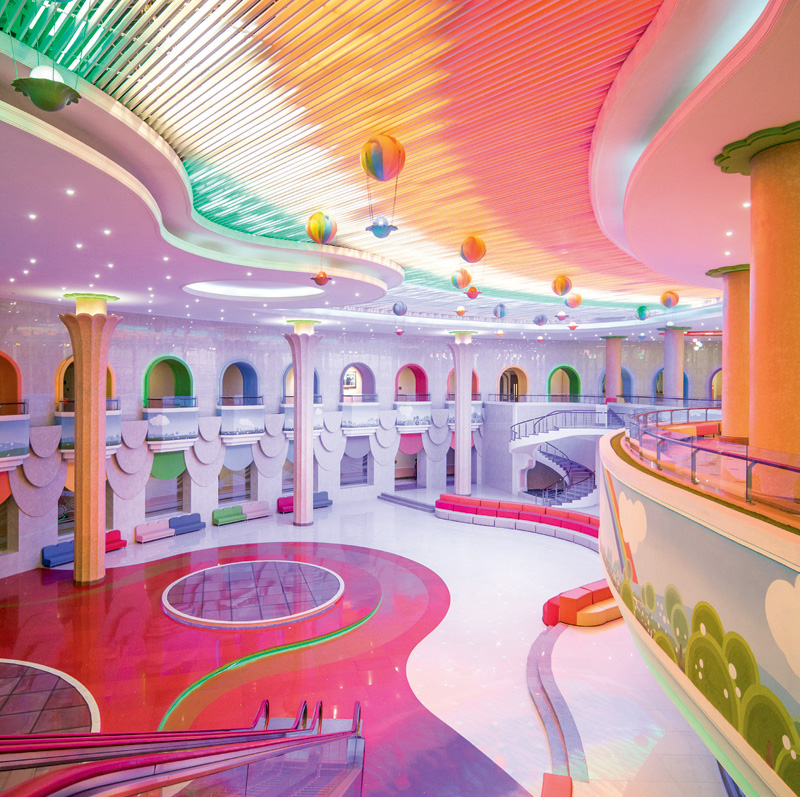 As an architect, would you say Pyongyang’s architectural model could become an architectural style as modernism or brutalism have demonstrated to be in architectural history?
As an architect, would you say Pyongyang’s architectural model could become an architectural style as modernism or brutalism have demonstrated to be in architectural history?
C.B: Pyongyang has different architectural styles corresponding to different periods, as many other cities. What is different is the ideological content of its architecture, which I think is unique, and quite difficult to export.
Can any parallelism be drawn between the architectural narrative existing in Pyongyang under the current regime and the political instrumentalization of architecture in 20th century fascist Italy?C.B: Generally speaking, the big impact of ideology on architecture is for sure a common trait of these two regimes, and both use architecture as a very important element of their propaganda. On the other side, since the two ideologies are very different, their architectural results are of course very different: just as an example, the fascism produced a very austere and sober architecture, while Juche architecture is very often playful and colorful. You can observe the same difference in the artistic representations of their leaders: Mussolini appears always very serious and solemn in his posture, while the Korean Leaders are always represented as smiling and welcoming.
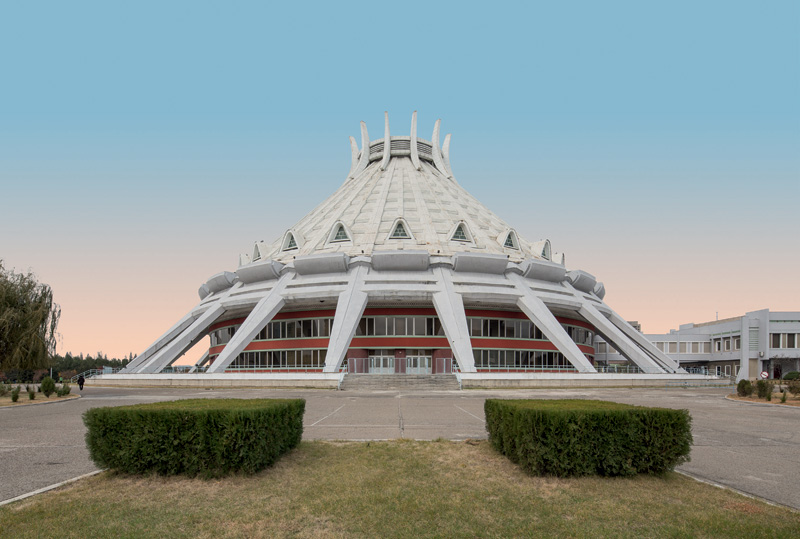 The title “Model City: Pyongyang” can be misleading. Should we read it as an account from an architect rapt in wonder or rather as a sarcastic statement?
The title “Model City: Pyongyang” can be misleading. Should we read it as an account from an architect rapt in wonder or rather as a sarcastic statement?
C.B: None of the two. It is simply a fact: from its reconstruction until now, Pyongyang was conceived, planned and developed as a model city where a new society can be built, as an example to follow for all the other cities of the state, and as a showcase of the Juche principles and values for the rest of the world.
For this book, you collaborated with Kristina Drapic, who realized the graphics of your photographs. Could you explain the process of creation and the aesthetic motivations behind this idea?C.B: Kristina has been working on the drawings and graphics of the book. Regarding the photography concept, it aims to establish a dialogue with the DPRK's artistic representations, and in the same time wants to portray the initial, peculiar and puzzling feeling of "fictional reality" that we had during our first visit, experiencing for the first time such a strikingly different city: a sense of confusion, where the perception between what is real and genuine merges with what is seen as staged or faked. Searching for a way to express and communicate this feeling, the inspiration came from one of the most recurring and surprising features in the DPRK’s visual narratives in painting, sculpture, mosaic and propaganda posters, where the sky is represented by Korean fine artists as a simple gradient of colors, like an hyper saturated sunset or sunrise, capable to transfigure the real into the ideal, as a metaphor of the utopia itself. The photography is therefore framed using an architectural approach and with no significant editing, whilst the sky is completely replaced by a soft gradient of pastel colors, taken from the color palette used by the Korean artists for the posters, and by the architects for the facades. The contrast between the two parts of the picture creates a visual alienation where the real part (the building or the city) looks unreal and the unreal part (the sky) could actually be real.
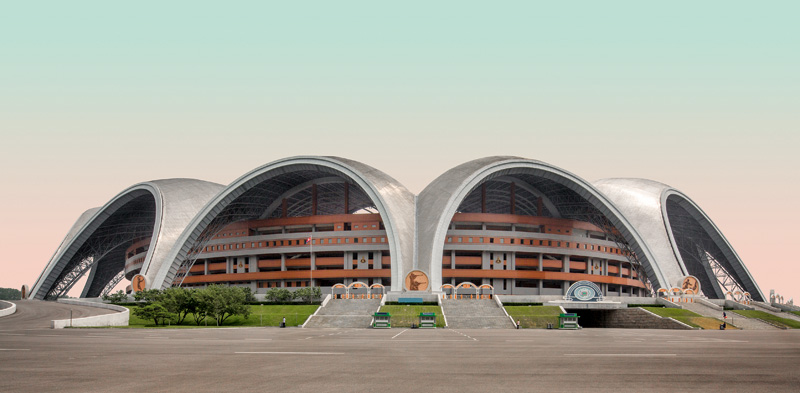 To what extent did your visits to Pyongyang provided you with inspiration in your daily architectural practice at ZAG?
To what extent did your visits to Pyongyang provided you with inspiration in your daily architectural practice at ZAG?
C.B: Difficult to say... of course architects are always fascinated by this kind of "total planning" , it's a kind of a prohibited dream: a place where everything is designed under one vision , and the development of the city is not left to be ruled by the market. But for sure I have been learning from Pyongyang. For example, I was impressed by the abundance of public buildings, public spaces and urban parks: it is one of the greenest cities in Asia. I also appreciate the fact that the architectural language and narrative is always easy to understand, which makes architecture more accessible, closer to common people.
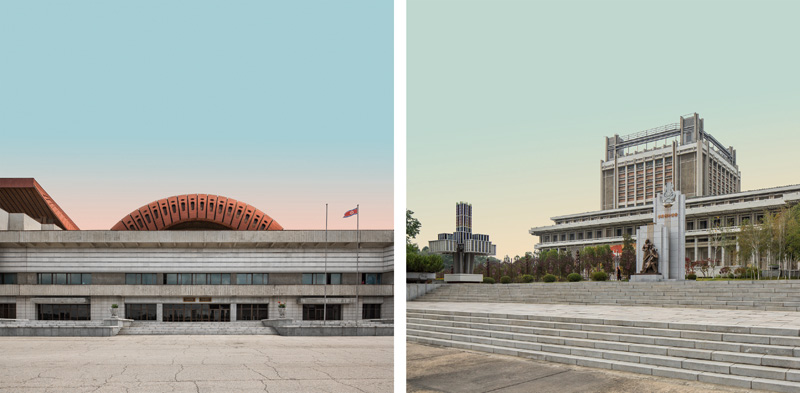 Living in Beijing you witnessed the recent years of urban metamorphosis in the Chinese capital as districts have been razed at the profit of a new wave of architectural style. What similarities would you draw between Pyongyang’s urbanization, its built architecture and Beijing’s city planning?
Living in Beijing you witnessed the recent years of urban metamorphosis in the Chinese capital as districts have been razed at the profit of a new wave of architectural style. What similarities would you draw between Pyongyang’s urbanization, its built architecture and Beijing’s city planning?
C.B: The path these two countries have chosen are very different, and so are the urban environment of their capital cities. China's urban development is ruled by a market economy like many other places, even if heavily planned, while DPRK has his own very peculiar system. Maybe it would be more interesting to try to draw a parallelism between Pyongyang now and Beijing in the 80s.
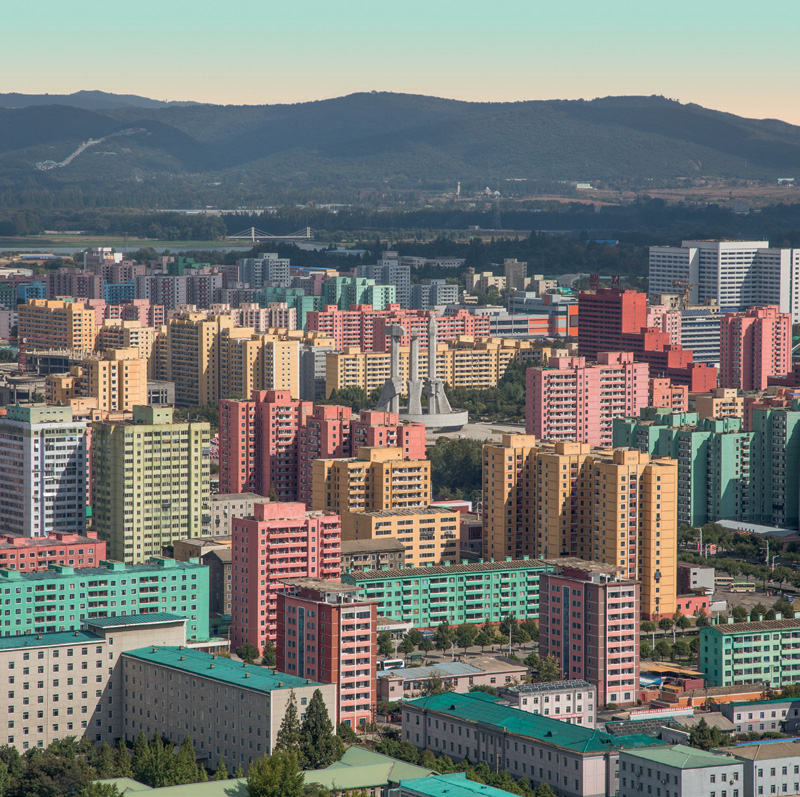 From an architectural conservation aspect, how can Pyongyang sustain its utopian vision in the future? Conservation in North Korea is sporadic, are the capital’s architectural visions doomed to end up in ruins as some of the Soviet-era brutalist constructions did?
From an architectural conservation aspect, how can Pyongyang sustain its utopian vision in the future? Conservation in North Korea is sporadic, are the capital’s architectural visions doomed to end up in ruins as some of the Soviet-era brutalist constructions did?
C.B: They are now renovating most of the old buildings in fact, even if not with a "conservative" approach, and architecture is quite well maintained. But the risk exists, of course, and we sincerely hope that such an original architecture will be preserved with all its peculiarities when a necessary change will eventually occur, in a future that we hope will unfold for the better. Not only for architecture, but especially for the people.